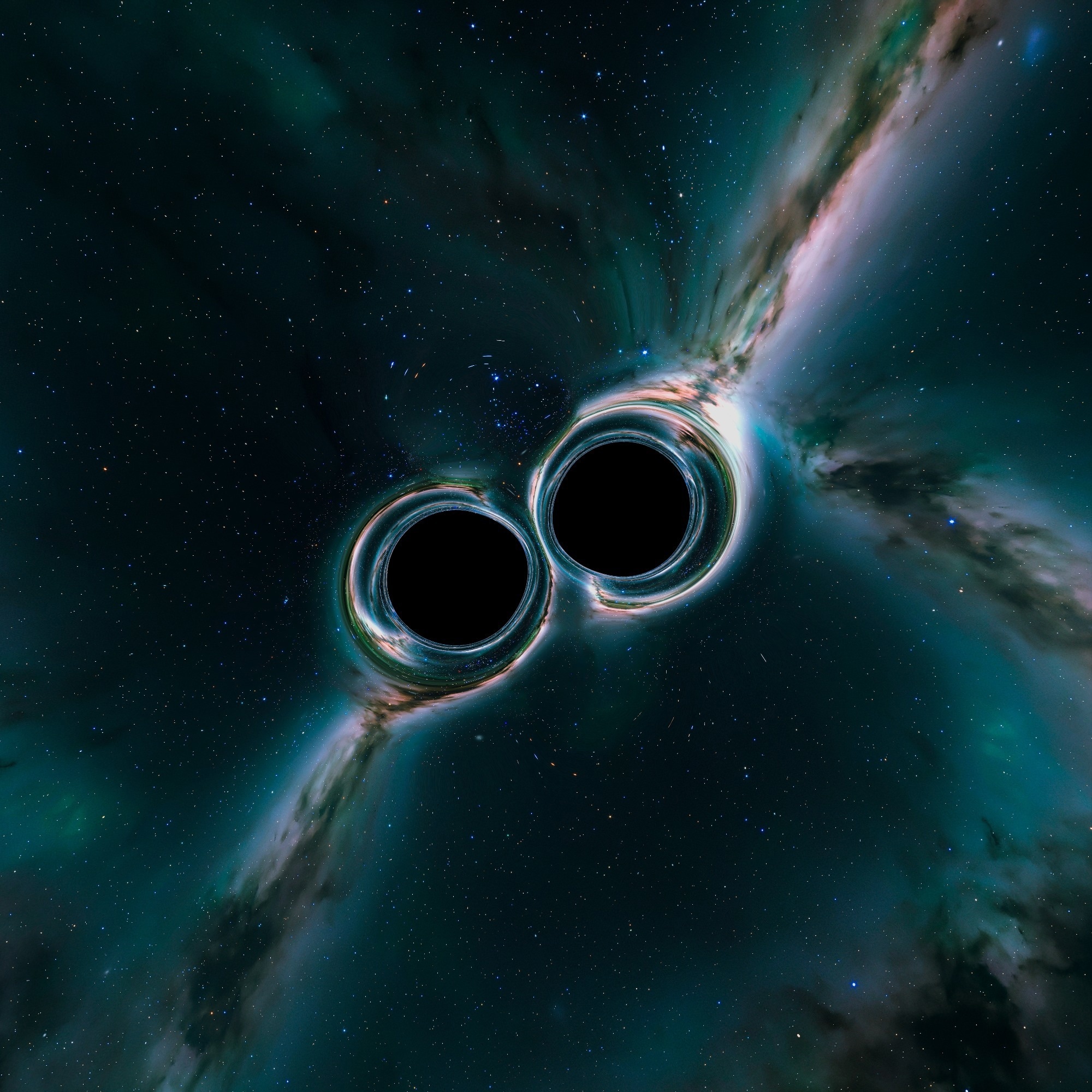Researchers from the University of Toronto have explored the connection between supermassive black holes and dark matter particles, bridging two of the universe's most significant and elusive phenomena. Their findings are detailed in a recent issue of Physical Review Letters.

Image Credit: Dabarti CGI/Shutterstock.com
Their new calculations address the long-standing "final parsec problem" in astronomy by revealing that pairs of supermassive black holes (SMBHs) can merge into a single, larger black hole due to previously unnoticed interactions with dark matter particles.
In 2023, astrophysicists reported detecting a gravitational wave "hum" resonating throughout the universe, theorizing that this background signal was generated by the merging of millions of SMBHs, each billions of times more massive than the Sun.
However, theoretical simulations showed that as these colossal cosmic objects spiral closer to one another, their approach slows when they are about a parsec apart (three light years), preventing the final merger. This "final parsec problem" not only contradicted the idea that merging SMBHs were responsible for the gravitational wave background but also challenged the notion that SMBHs form from the merger of smaller black holes.
We show that including the previously overlooked effect of dark matter can help supermassive black holes overcome this final parsec of separation and coalesce. Our calculations explain how that can occur, in contrast to what was previously thought.
Gonzalo Alonso-Álvarez, Postdoctoral Fellow and Study Co-Author, Department of Physics, University of Toronto
SMBHs are thought to reside at the centers of most galaxies and orbit each other when galaxies collide. As they orbit, the gravitational pull of neighboring stars exerts influence, causing them to slow down. Ultimately, this inward spiral leads to their merger.
Previous models suggested that when SMBHs come within about a parsec of each other, they begin to interact with their surrounding dark matter halo. The gravitational pull of the spiraling SMBHs would expel dark matter particles from the system, resulting in a reduced dark matter density that prevents energy transfer from the SMBHs and halts their orbital decay.
In contrast, the new model by Alonso-Álvarez and colleagues shows that dark matter particles interact in such a way that prevents their expulsion. This means that the dark matter halo remains dense enough for interactions with SMBHs to continue diminishing their orbits, ultimately facilitating a merger.
The possibility that dark matter particles interact with each other is an assumption that we made, an extra ingredient that not all dark matter models contain. Our argument is that only models with that ingredient can solve the final parsec problem.
Gonzalo Alonso-Álvarez, Postdoctoral Fellow and Study Co-Author, Department of Physics, University of Toronto
In 2015, astrophysicists using the Laser Interferometer Gravitational-Wave Observatory (LIGO) detected gravitational waves with much longer wavelengths, revealing a background hum generated by massive cosmic collisions. These waves were produced by the merger of two black holes, each roughly thirty times the mass of the Sun.
In recent years, scientists have employed the Pulsar Timing Array to further study this background hum. By monitoring tiny variations in the signals from pulsars—rapidly spinning neutron stars that emit powerful radio pulses—the array is able to detect gravitational waves.
A prediction of our proposal is that the spectrum of gravitational waves observed by pulsar timing arrays should be softened at low frequencies. The current data already hint at this behavior, and new data may be able to confirm it in the next few years.
James Cline, Professor, McGill University
The new findings provide valuable insights into the nature of dark matter, enhance our understanding of SMBH mergers, and clarify the gravitational wave background signal.
Alonso-Álvarez said, “Our work is a new way to help us understand the particle nature of dark matter. We found that the evolution of black hole orbits is very sensitive to the microphysics of dark matter and that means we can use observations of supermassive black hole mergers to better understand these particles.”
For instance, the researchers found that the shapes of galactic dark matter halos can also be explained by the interactions between the dark matter particles they investigated.
Alonso-Álvarez said, “We found that the final parsec problem can only be solved if dark matter particles interact at a rate that can alter the distribution of dark matter on galactic scales. This was unexpected since the physical scales at which the processes occur are three or more orders of magnitude apart. That is exciting.”
Journal Reference:
Alonso-Álvarez, G., et al. (2024) Self-Interacting Dark Matter Solves the Final Parsec Problem of Supermassive Black Hole Mergers. Physical Review Letters. doi.org/10.1103/physrevlett.133.021401.